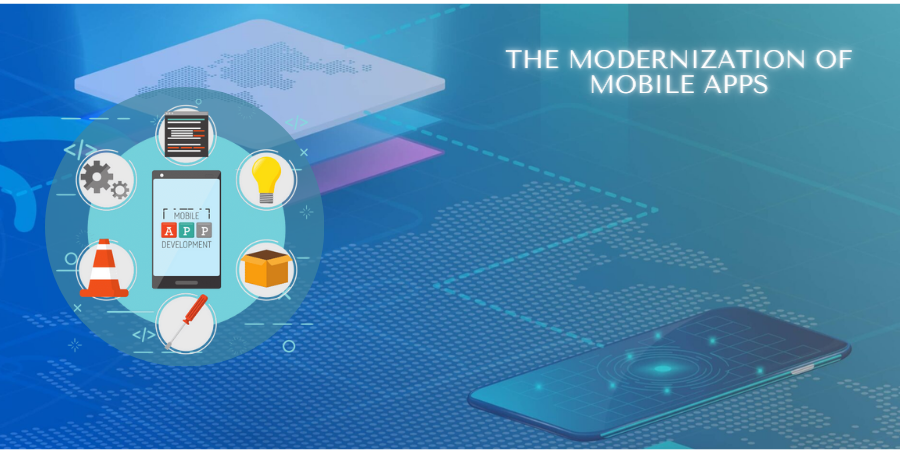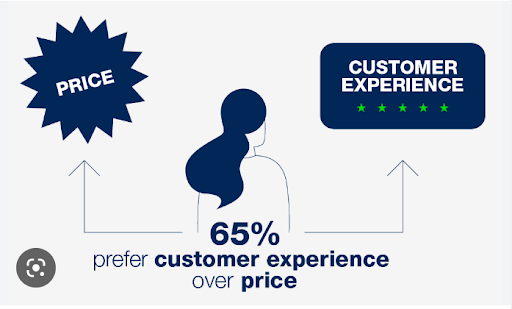The Modernization of Mobile Apps

Modernization means digitizing traditional process that aligns with customers' interests.
Modernization of mobile applications happens when an organization/brand adds new and more convenient features to the mobiles. It also means deleting a few old features which are no longer helpful. Such a process of modernizing apps is called Legacy Modernization.
Rather than altogether abandoning the application at once, adding new features, and tweaking a few older ones, the application can be modernized. Below mentioned are a few ways you can ask your mobile app development company to update the mobile apps.
Choosing the Right App Modernization Strategy
At times, current mobile apps do not provide the required ROI, are incompatible with various devices and platforms, and also struggle to meet the security standards of state–of–the–art technology. It needs to have a makeover or a glow-up. Thus, below mentioned are the 7 ways to modernize mobile apps as well as software:
· Encapsulation
When the brands think about applying the encapsulation method of modernization to the mobile application, they break the functionality of apps into smaller versions and provide them to the users separately. It might sound like a costlier option to go for, but sometimes it works because accommodating all in one could become confusing for the user to use.
For example, a travel agency could separate air booking, land bookings, water bookings, and train bookings; then, it is called encapsulating the app. This will enable users to make separate bookings without getting confused.
· Rehosting
This method is also known as Lift and Shift method. In this method of modernizing the app, as the name suggests, the app is lifted and shifted to a new environment altogether. Without redesigning or restructuring its architecture, it is moved to a robust environment. No significant changes are made to databases, applications, or processes.
One way to put it is that when you move a house, you pack up everything and take it to another place. The basic stuff remains the same – kitchen utensils, furniture, fixtures, etc. Just the place we live in, changes. The advantage is that the company invests a lot in making legacy apps and that investment is saved by modernizing the app.
· Replatforming
Replatforming the app doesn't require changing the core application. It remains the same. What changes here are the functionalities and user experience. They are enhanced. It upgrades the application to work optimally in the cloud without rewriting the core architecture.
If the brand chooses to Replatform, it will help you integrate the services, improving the productivity of staff and minimizing human errors. It is always better than restructuring, which is costly and time-consuming. With Replatforming the application, a developer can always reuse the language, codes, and framework to speed up the process.
· Refactoring
Refactoring the application increases its life of the app. It involves rewriting one or more app components to take advantage of the public cloud. Refactoring of the app works with new languages and tools like replacing the older Oracle database with modern AWS aurora.
Application refactoring improves the app's performance, adding needed new functionality, strengthening security, or adding support for mobile platforms such as iOS and Android, which can expand an application’s reach through the app stores for those new platforms.
· Rearchitecting
It is one of the most complicated methods of modernizing mobile apps. It involves completely overhauling the existing mobile application framework and re-imagining how application architecture is conceptualized and developed. With mobile app rearchitecting, brands acquire more scalability, agility, and enhanced capabilities.
The serverless architecture, where servers are outsourced from third-party apps, is the perfect example of modernizing mobile apps through rearchitecting.
· Rebuilding
Rebuilding the app is stage 49 of mobile app modernization if we consider replacing the app as stage 50 of it. In a way, the app is changed completely, but the originality is not lost. As the name suggests, the legacy app doesn't lose its legacy.
It is similar to rearchitecting the app, but the significant difference is in the actual process. While in rearchitect, the app is remodeled, whereas, in rebuilding, it is re-developed and relaunched in a completely new avatar.
· Replacing
Replacing the mobile app is the mobile-modernized version of people who come back bigger and better after a job loss. Just the way people lost themselves in the pandemic, but they emerged out of it more robust and better. Similarly, replacing the current mobile app with the new one for better results.
The app is replaced with a completely new structure, scope, and functionalities. In this model, more unique, more robust, and scalable technologies such as Cloud computing is deployed to make the modern application more ROI-centric and more productive.
The Benefits of Mobile Apps Modernization
Application Modernization is the practice of updating the older software to a newer dynamic version of it, including changing the language, framework, and infrastructure of the program. There are various benefits of mobile app modernization. A few are mentioned below:
· Cloud Modernization
While competitors of yours might still be wondering whether to move to better technology, you be the first one to adapt to it. Be the first one to nullify the possibility of being a laggard. Go ahead and invest in cloud modernization.
· Boost in Productivity
According to trusted sources, updating the apps could boost everyone's productivity, including designer, developer, and user, by 40%. The modern application would remove bugs and defects by 60%. With the help of new technology, the app will launch and run smoothly.
· Security
Apps with old features and security systems find it hard to stand against modern security standards. The developers admit that legacy applications are vulnerable to hackers. Modernizing apps involves increasing the security of the apps, making it more challenging for hackers to steal data.
· Increased User Satisfaction
Whether the employees are using the app or the user, the task becomes a hassle. But modernizing the application with a refined user-facing interface, leading-edge functionalities, and innovative features improves not only customer satisfaction but also the brand reputation.
· Compatibility And Responsiveness
If the app is modernized, its interoperability will be enhanced with every new technology, platform, and code. In addition, it enables organizations to seamlessly integrate their applications so they're better positioned to meet current and future business demands.
The bottom line is:
Need we say more about the modernization of mobile apps? It is not a luxury but a necessity. Once you modernize the apps, you’ll be able to add more features and enhance them thoroughly according to the users' requirements. I hope this post helped you understand why the modernization of the app is a must.




























